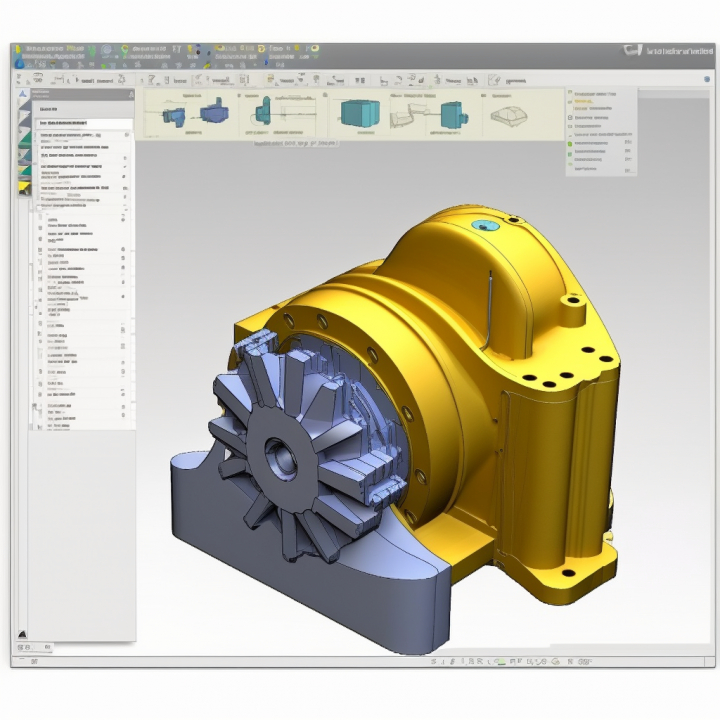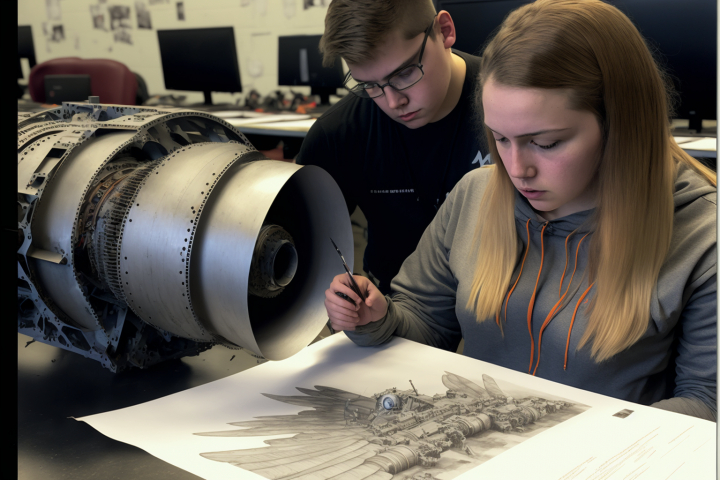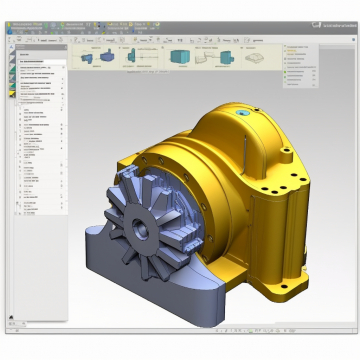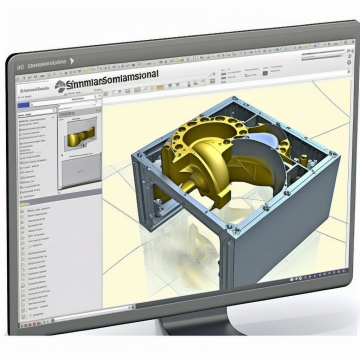3D Dynamic Motion Simulation with Advanced Features
The 3D dynamic motion simulation capabilities include the ability to model complex interactions such as 3D contact, gears, actuators, and connections between parts. When integrated with Solid Edge, the software automatically converts relations into motion joints, ensuring a smooth and efficient transition between the two platforms.
These advanced features enable engineers and designers to accurately simulate the real-world behavior of their creations, accounting for intricate mechanical interactions and providing valuable insights into product performance. The comprehensive simulation environment helps users identify potential issues early in the development process, optimize designs, and ensure that their products function effectively and reliably in real-world conditions.
Engaging Classrooms with Interactive Physics: A Dynamic Learning Experience
Thursday, 18 August 2022Interactive Physics is a powerful teaching tool that enhances students' motivation and learning experiences in the classroom. By offering a diverse collection of ready-to-use experiments and captivating in-class demonstrations, Interactive Physics saves teachers valuable lesson-preparation time. Seamlessly integrating into any physics curriculum, this versatile software aligns with National and State Education Standards and Objectives, ensuring a comprehensive educational experience.
Interactive Physics revolutionizes traditional teaching methods by transforming classrooms into interactive learning environments, fostering student engagement and comprehension.
Through captivating demonstrations and hands-on experiments, Interactive Physics sparks students' curiosity and facilitates a deeper understanding of complex physics concepts.
Teachers can easily customize Interactive Physics to suit their specific lesson plans and objectives, ensuring a tailored educational experience for students.
The software's extensive library of ready-to-run experiments allows educators to swiftly integrate Interactive Physics into their existing curriculum, enhancing lesson delivery and student engagement.
Interactive Physics aligns with National and State Education Standards, ensuring that students receive a thorough and well-rounded physics education.
The software enables educators to create dynamic, real-world simulations that captivate students and encourage active participation in the learning process.
Interactive Physics promotes collaborative learning, as students work together to explore physics concepts, solve problems, and discuss their findings.
By simulating real-life scenarios, Interactive Physics helps students bridge the gap between abstract theoretical concepts and practical applications.
The software's intuitive interface allows students to quickly grasp its functionality, ensuring that valuable classroom time is focused on learning physics concepts.
Interactive Physics supports various learning styles, enabling students to engage with the material in a way that best suits their individual needs.
Educators can leverage Interactive Physics to assess students' understanding of concepts, identify misconceptions, and provide targeted feedback.
The software's customizable nature allows teachers to create unique lesson plans that cater to students with different skill levels and learning preferences.
Interactive Physics encourages students to develop critical thinking and problem-solving skills, essential components of a strong physics education.
The software's real-time simulations enable students to visualize the immediate effects of their actions, fostering a deeper understanding of cause-and-effect relationships.
By incorporating Interactive Physics into their classrooms, educators can cultivate a supportive learning environment that encourages students to ask questions, experiment, and learn from their mistakes.
Interactive Physics equips students with the tools necessary to explore various physics principles, empowering them to take charge of their learning journey.
The software's visually engaging simulations and demonstrations help to demystify complex physics concepts, making them more accessible to students.
Interactive Physics serves as an invaluable resource for educators, streamlining lesson preparation and promoting efficient teaching strategies.
By providing real-world context and applications, Interactive Physics helps students recognize the relevance of physics in their daily lives.
The software's adaptability allows educators to keep pace with evolving educational standards and objectives, ensuring that their students receive a future-proof physics education.
Interactive Physics fosters a sense of accomplishment in students as they successfully navigate and understand challenging physics concepts.
The software allows students to experiment with various parameters and observe the results, promoting a more nuanced understanding of the underlying principles.
Interactive Physics can be used as a supplementary tool for homework and independent study, reinforcing students' understanding of class material.
Educators can integrate Interactive Physics into a flipped classroom model, allowing students to explore concepts independently before engaging in class discussions.
The software's visually captivating demonstrations facilitate better retention of physics principles, ensuring that students internalize key concepts.
By utilizing Interactive Physics, educators can create a more inclusive learning environment that caters to students with diverse learning needs.
The software's simulations provide immediate feedback
Dynamic Designer Motion (DDM) represents a groundbreaking advancement in the engineering and design realm, as it seamlessly incorporates our state-of-the-art dynamic motion simulation technology into two widely-used CAD systems, Solid Edge and Autodesk Inventor. This remarkable integration allows users to access sophisticated motion simulation capabilities while working with the familiar geometry, interface, and workflow of their preferred CAD platforms.
Imagine an innovative engineering firm striving to create a cutting-edge robotic arm for use in advanced manufacturing facilities. The design team is well-versed in using Solid Edge or Autodesk Inventor as their primary CAD systems, but they need to ensure that their new creation will function flawlessly and withstand the test of time.
This is where DDM comes in, bridging the gap between traditional CAD design and advanced motion simulation. The engineering team can now simulate the dynamic motion of their robotic arm, analyzing its performance under various conditions and identifying potential issues before investing in costly physical prototypes.
The story of DDM's development began with a vision to revolutionize the engineering and design industry by providing a comprehensive and user-friendly solution for motion simulation. To achieve this goal, our experts embarked on a mission to develop a powerful tool that would seamlessly integrate with popular CAD systems, ensuring that users could maintain their familiar design environment while benefiting from advanced simulation capabilities.
As the development progressed, our team focused on crafting an intuitive interface that would facilitate quick and efficient adoption by engineers and designers. This focus on usability ensured that users could harness DDM's full potential without being burdened by a steep learning curve.
Upon its launch, DDM received widespread acclaim for its ability to enhance the capabilities of Solid Edge and Autodesk Inventor, enabling users to delve into the realm of motion simulation with ease. The engineering community quickly recognized the value of DDM, as it empowered them to optimize their designs, reduce development costs, and shorten time-to-market.
As the success of DDM grew, it began to transform the way engineering firms approached product development. The seamless integration of motion simulation into existing CAD systems fostered a more streamlined and efficient design process, allowing engineers to create innovative and reliable products that could withstand the demands of the modern world.
Today, DDM continues to be a game-changer in the engineering and design industry, providing an invaluable tool for designers and engineers seeking to create cutting-edge products. With its advanced dynamic motion simulation capabilities, DDM has established itself as a vital component in the development process of countless projects, fostering innovation and driving success in the competitive world of engineering and design.
In summary, Dynamic Designer Motion (DDM) stands as a revolutionary solution that merges advanced dynamic motion simulation technology with popular CAD systems, Solid Edge and Autodesk Inventor. This seamless integration allows engineers and designers to maintain their familiar design environment while benefiting from powerful simulation capabilities. With its user-friendly interface and comprehensive features, DDM has become an essential tool for modern engineers, paving the way for innovative, efficient, and optimized design processes.
K2 Archives
K2 Comments
K2 User
K2 Content
- Instructor Insights and Academic Endeavors: Interactive Physics in Action Written on Friday, 19 August 2022 07:53
- 3D Dynamic Motion Simulation with Advanced Features Written on Friday, 19 August 2022 07:52
- SimWise: Comprehensive Simulation Capabilities for Engineers and Designers Written on Friday, 19 August 2022 07:51







